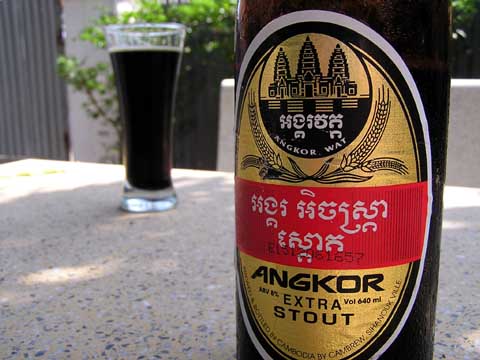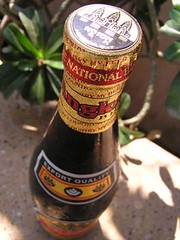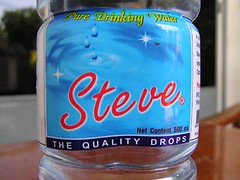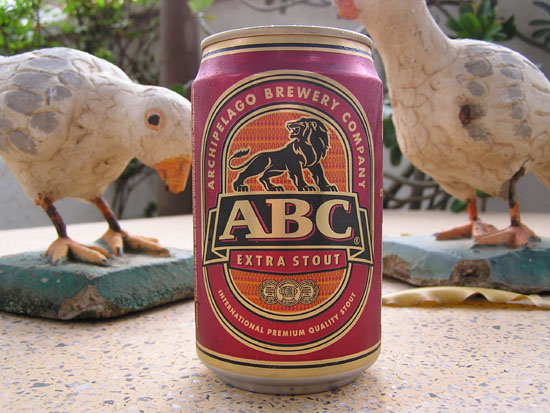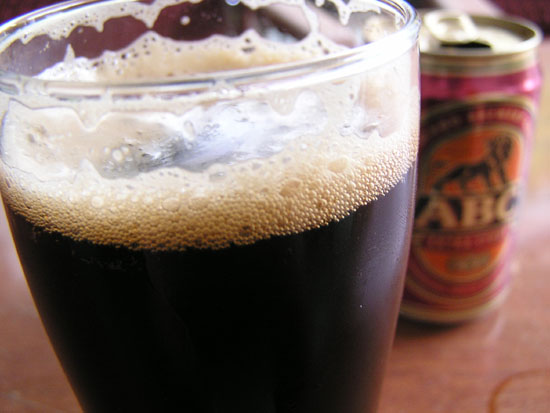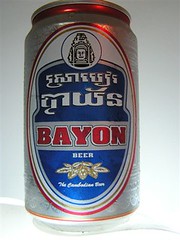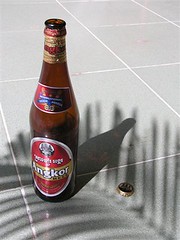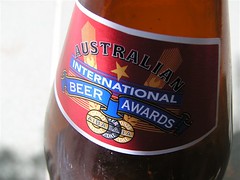Brewer: Cambrew
One of my more fond memories of my American housemates while I was living in California was sitting out the front of our rented dive on Friday afternoons in some plastic deckchairs, drinking 40s of malt liquor from brown paper bags. We were white (and Hispanic) trash and we enjoyed white trash beer and the process lowering the tone of the entire neighbourhood. My housemate Adam would always buy Bud. Generally, I’d buy either Mickey’s or Schlitz malt liquor, mostly because the word ‘Schlitz’ rolls off the tongue so slickly that it makes you feel that someone has greased you up all over.
Klang Beer brings back those memories for exactly the wrong reason. If I was generous I’d call it a ‘strong lager’ but it isn’t. It’s malt liquor. It uses beer as a vague point of reference to which they add too much alcohol. The one reason you drink malt liquor is for effect and it holds no illusions otherwise. Klang means ‘strong’ in Khmer, and to illustrate the point, Cambrew have put Cambodia’s strongest non-mythical creature on the bottle, the elephant, to assist the illiterate to get blind as well.
Cambrew says (on the can): ‘Klang Beer is carefully brewed using the most advanced brewing technology available. It is brewed to the highest possible standard for beer drinkers the world over. Klang Beer is a perfect drink for all kinds of celebration and it can be savoured at any time of day. Mind you, it’s a very strong beer but go ahead and take the challenge! After all, it is specially brewed for you.
I say: How can you resist a beer that actually issues you with a challenge? And you can take that challenge at any time of day? Mmm…alcomohol. Thin and yellow with a curious bile aftertaste. No head, no hops, no fun.
Extra Klang Stout.
In my scribbled notes for Extra Klang Stout, I wrote these words in capital letters: THERE IS WRONG. There was something severely amiss with this beer. It had gritty sediment in it and it wasn’t the positive, bottom-fermented yeast sediment. This sediment was jet black and crunchy. Strangely, this Klang is less klang than the lager, with a paltry 6% alcohol by volume.
Cambrew says: ‘A superb combination of malt, hops and yeast. Brewed to perfection for that wholesome, satisfying taste’
I say: A superfluous combination of malt, hops, and sand from the Mekong. You can smell the alcohol through the malt, but is redeemed by a hint of brown sugar. Customary bile aftertaste. No burnt dark malt flavours. Poor head retention. I’m giving this one the benefit of the doubt, because maybe I unluckily received an extremely old can of it.
Availability: Can only, stocked by most roadside stalls.

